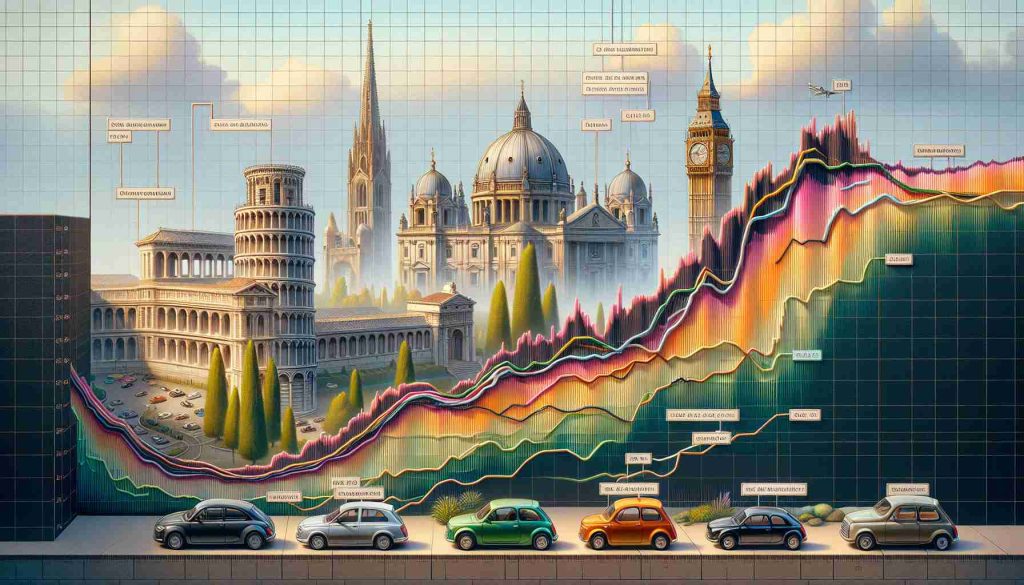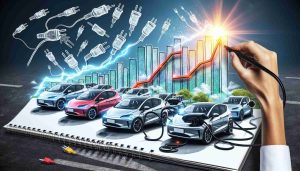Car Registrations Surge and Decline in Europe’s Markets
5 min read
New car registrations in the European Union saw a modest rise in 2024, with a 0.8% increase leading to approximately 10.6 million units sold. However, the performance varied significantly across different countries. Spain emerged as a standout performer, boasting a robust 7.1% growth rate amidst a broader mix of declines in major markets like France, where registrations fell by 3.2%, as well as drops in Germany and Italy.
In December 2024, the EU experienced a more dynamic shift, with overall new car registrations jumping by 5.1%. Spain again led the charge with an impressive 28.8% increase, while France noted a smaller rise of 1.5%. Conversely, Germany saw a notable decline of 7.1%, and Italy’s numbers dropped by 4.9%.
Examining the trends in car types reveals significant shifts. Battery-electric vehicles, while still popular, experienced a 10.2% drop in registrations during December, mostly due to decreased activity in Germany and France. Conversely, plug-in hybrids gained momentum, increasing by 4.9%.
Petrol cars faced their own challenges, suffering a 1.8% year-on-year decline, especially pronounced in France, while diesel vehicles slipped further, achieving a meager 9.8% market share. This mixed landscape underscores the ongoing evolution in consumer preferences across Europe’s automotive sector.
Shifting Gears: The Evolution of the European Automotive Landscape
The recent fluctuations in new car registrations across the European Union not only highlight shifting consumer preferences but also reflect broader societal and economic trends. The modest overall growth of 0.8% in 2024, alongside Spain’s impressive 7.1% increase, suggests a rejuvenation in specific markets, indicating that consumer confidence in certain regions remains resilient amid economic uncertainties. Conversely, the declines in major markets such as France and Germany signal a potential cultural shift towards sustainability and efficiency in transportation.
The implications for the global economy are profound. As European consumers increasingly gravitate towards plug-in hybrids and away from traditional petrol and diesel vehicles, manufacturers may have to pivot strategies to align with this trajectory. This shift not only boosts technological innovation but also fosters new job opportunities within the clean energy sector. The rise of electric vehicles (EVs) symbolizes a critical turning point in how societies value mobility, potentially enhancing infrastructure resilience in the face of climate change.
However, the drop in battery-electric vehicle registrations raises questions about market saturation and consumer sentiment toward newer technologies. The environmental implications are significant, as the European Union continues to grapple with greenhouse gas emissions. The ongoing decline of diesel vehicles, with only 9.8% market share, further underscores a move towards more sustainable alternatives.
In this rapidly evolving landscape, future trends will likely feature enhanced battery technologies and broader charging network development, shaping how the region—and indeed the globe—transitions to greener transportation solutions. The long-term significance lies in the potential for Europe to lead the world in automotive innovation and sustainability, forging a path that other regions may follow as they confront their own environmental challenges.
EU Car Market in 2024: Trends, Insights, and Future Predictions
## Overview of the European Car Market in 2024
In 2024, the European Union’s automotive market exhibited a complex landscape, marked by both growth and decline in new car registrations. Overall, there was a modest increase of 0.8%, culminating in approximately 10.6 million new vehicles sold across member states. However, the performance was not uniform; disparities emerged between various countries, highlighting a dynamic and evolving market.
## Regional Performance
Spain’s Remarkable Growth
Spain stood out as a beacon of growth, recording a robust 7.1% increase in new car registrations throughout the year. This trend culminated in December with an extraordinary spike of 28.8%, signaling strong consumer confidence and demand.
Declines in Major Markets
In contrast, significant declines were observed in other major markets. France experienced a 3.2% drop in total registrations for the year and a modest increase of only 1.5% in December. Germany and Italy also faced setbacks, with the former reporting a 7.1% decline and the latter a 4.9% decrease.
## Shift in Vehicle Preferences
Battery-Electric and Plug-in Hybrid Trends
The first half of 2024 brought notable shifts in consumer preferences regarding vehicle types. Battery-electric vehicle (BEV) registrations fell by 10.2% in December, attributed mainly to lower demand in Germany and France.
Conversely, the popularity of plug-in hybrids surged, with registrations increasing by 4.9%. This reflects a growing consumer interest in versatile vehicle options that combine electric and traditional powertrains.
Traditional Fuel Sources
Fuel types also showed shifting dynamics, with petrol vehicles facing a year-on-year decline of 1.8%, particularly in France. Diesel vehicles suffered even more, dwindling to a mere 9.8% market share, emphasizing a continued shift towards alternative fuel vehicles.
## Features and Specifications of Popular Vehicles
Automakers are responding to these evolving trends by focusing on features that cater to changing consumer preferences. Improvements in battery technology, longer ranges for electric vehicles, and enhanced fuel efficiency for hybrid models are becoming increasingly important. The integration of advanced driver assistance systems (ADAS) and infotainment features are also pivotal in attracting new buyers.
## Sustainability and Innovations
Automakers are increasingly committing to sustainability, investing in electric vehicle (EV) technology and renewable energy sources for their operations. The EU’s stringent emissions regulations are driving innovation, leading to a rise in eco-friendly manufacturing practices and the introduction of more sustainable materials in vehicle production.
## Market Predictions and Future Trends
As we move deeper into 2024 and beyond, several trends are likely to shape the European automotive market:
1. Increased Electrification: The focus on electric vehicles will only intensify, with more manufacturers committing to complete electrification in the coming years.
2. Enhanced Infrastructure: Investment in charging infrastructure is predicted to accelerate, supporting the growth of electric vehicle adoption.
3. Consumer Awareness: As consumers become more environmentally conscious, the demand for sustainable and eco-friendly vehicles will rise.
4. Technological Advancements: Continued advancements in automotive technology including automation, AI, and connected vehicles will significantly influence consumer choices.
## Limitations and Challenges
Despite the positive trends, challenges remain. The high costs associated with electric vehicles, the ongoing supply chain disruptions, and geopolitical factors can hinder market growth. Additionally, consumer skepticism about the longevity and performance of new technologies may slow down the adoption rate of electric and hybrid vehicles.
## Conclusion
The EU car market in 2024 reflects a pivotal period of transition, where varying performance across countries, emerging vehicle preferences, and a commitment to sustainability delineate a new landscape for the automotive industry. Continuous monitoring of these factors will be essential for stakeholders looking to navigate the evolving market successfully.
For more information on the automotive trends in the EU, visit our main page.



